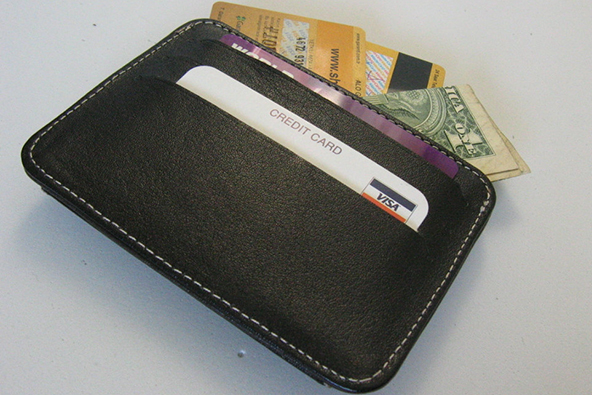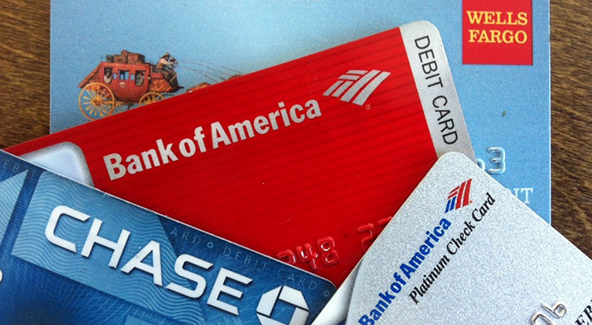How Credit Cards Are Replacing Coupons

Credit card companies have been looking high and low for new revenue sources to make up for the losses they suffered in the wake of the Durbin Amendment. Some of them, like new checking account fees or higher overdraft charges, were easy to identify, although their implementation has not been carried out as smoothly as the banks would have hoped for. Another anticipated reaction was the issuers’ campaign to drive customers away from using the now-unprofitable debit cards and toward the more desirable credit and prepaid cards. The latest data indicate that this offensive is proceeding well.
But we knew that the issuers would also develop some more subtle strategies for dealing with the revenue shortfall and sure enough, we are now beginning to learn about them. Dow Jones’ Andrew R. Johnson is telling us about “card-linked offers,” which work much like coupons, but without the pieces of paper. To claim your discount, you only have to swipe your card at the checkout and then the rebate is added to your cash-back bonus. And the bank makes its money by charging participating merchants a fee on each offer. Let’s take a closer look.
How Card-linked Offers Work
Here is how Bank of America’s BankAmeriDeals program, currently being tested with the bank’s own employees, would work, as described by Johnson:
The offers appear within the list of transactions in a user’s online bank account. A user would click on an offer to activate it, and then use their Bank of America credit or debit card at the merchant to redeem it.
The cardholder will then get her rebate in the form of a cash-back within two weeks of the transaction date.
Card-linked offers are much more than digital coupons. The vendors operating these programs use mountains of cardholder data, provided to them by the card issuers, to identify consumers whose spending patterns indicate that they are not only likely to use a given offer, but also to spend more than the gift amount. As one of the experts quoted by Johnson puts it:
There’s almost an eHarmony aspect to this.
Here is an example of how the cardholder / offer matching would work:
[R]etailers can target offers to cardholders who have shopped at a competitor in a specific ZIP code within a defined time frame. When a merchant inputs a deal into the program, the system looks across all the transactions of Cardlytics’ [one of the vendors] bank clients.
So this is a coupon book on steroids.
To Enroll or not to Enroll
There seems to be a bit for everyone in these card-linked offers. Retailers get access to new customers, card issuers get extra revenue and consumers get rebates on purchases they would have probably (based on their transaction history) made anyway. So everyone should love the concept, right?
Well, it turns out that at least some consumer protection groups are not happy with the way transaction data are shared among banks and third-party vendors, pointing at the potential for “privacy abuse.” The vendors, for their part, claim that they never actually see the cardholders’ personal account data, but just “an answer to a query that is aggregated across – at a minimum – hundreds of customers.” Well, if sharing my transaction history would enable me to save on my next purchase at a store where I shop regularly, I’d do it. However, I support the skeptics’ request that consumers are given the ability to opt in or out of the program, rather than being auto-enrolled.
The Takeaway
It is important to recognize that not all of the Durbin Amendment’s side effects are having a negative impact on consumers. The card-linked offers are certainly among the positive ones, along with the vastly improved credit card rewards programs and prepaid cards, and there is no reason not to participate in such programs.
There are plenty of things that the issuers are doing in their efforts to make up for the lost interchange revenues for which we are collectively paying, but the merchants will end up paying for some of these exercises. And that’s when the consumers benefit. As I said, there is no reason not to take advantage of these opportunities.
Image credit: Etsystatic.com.



Card-linked offers are not really new. They work similarly to the way credit card companies offer discounts on, say, rental cars or hotel rooms. But now many providers are trying to open that up as a third-party advertisement network, which will be capable of creating discounts and offers that are tailor-made for consumers based on their actual spending habits.
Here is how these programs work. Lenders agree to provide anonymous payment data to a marketing company, which then looks at it and sends out offers (via SMS or email or through some other medium) to a particular group of consumers that a merchant wants to target. There are two different types of card-linked offer providers: ones that operate within the lenders and those outside of them. Some of these programs are opt-in and some are opt-out.
Well, for consumers like me who are concerned with privacy and are worried about yet another third-party handling their personal data, this is not a good thing. Banks are saying that they keep the data anonymous but haven’t we heard this before? I would like to have the option to sign in for it, not to be automatically be signed in.
Card-linked offers are a huge improvement over traditional marketing channels, because of their precision targeting capabilities. Because offers are linked to consumers’ most-often used credit and debit cards, retailers can target specific segments based on the transaction data. For example, a merchant can create a more valuable offer and market it to consumers who buy in a given retail category but not at this merchant’s stores. This way, the merchant can directly see the impact of this offer.
There are hundreds of house-name retailers and thousands of smaller merchants that are using card-linked offers now, and from what we know it seems like they are liking the experience. I guess sometime soon we’ll just go to our bank’s website, find a deal we like linked to our cards, and redeem it just by swiping the card at the retailer.